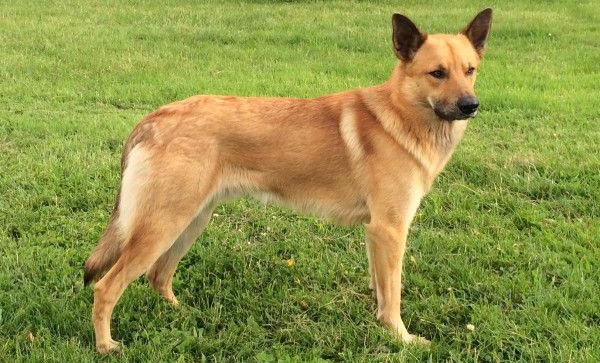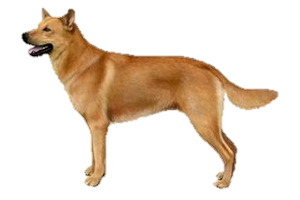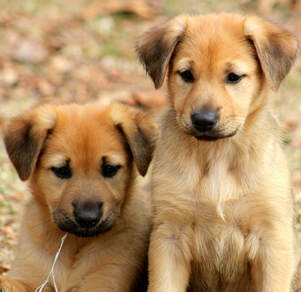The Chinook is a rare and unique American dog breed that is not well known to the general public. However, those who are familiar with the breed are quick to fall in love with its gentle and affectionate nature. Chinooks are intelligent, athletic, and loyal companions that make excellent family pets. In this article, we will delve into the history, appearance, temperament, and care of the Chinook breed, as well as explore the current state of the breed and its future.
History of the Chinook
The Chinook is a relatively new breed, having been developed in the early 20th century. The breed was created by crossing a sled dog with a husky, and the goal was to create a dog that was strong, intelligent, and had a gentle temperament. The Chinook was named after the Chinook tribe, an indigenous people who lived in the Pacific Northwest.

Development of the Chinook Breed
The story of the Chinook breed begins with Arthur Walden, a sled dog driver from New Hampshire. In the early 1900s, Walden was looking for a dog that could withstand the harsh conditions of the New England winters and be used for sledding. He began experimenting with different breeds, including huskies, mastiffs, and German Shepherds, but none of them met his expectations.
In 1917, Walden acquired a large, yellow male puppy from a litter of mixed-breed puppies. This puppy, named “Chinook,” quickly became Walden’s favorite and proved to be an exceptional sled dog. Chinook was strong, intelligent, and had a gentle temperament, making him the perfect working dog.
Walden continued to breed Chinook with other dogs, including huskies and Belgian Sheepdogs, to create a new breed that would have the best qualities of each breed. The result was the Chinook breed, which Walden registered in 1927.
Popularity and Decline of the Chinook Breed
The Chinook breed quickly gained popularity in the early 20th century, and it was used as a working dog in a variety of roles, including sledding, hunting, and herding. The breed’s popularity continued to grow, and by the 1940s, there were over 100 Chinooks in the United States.
However, the popularity of the breed began to decline in the mid-20th century. With the rise of snowmobiles and other forms of transportation, the need for sled dogs decreased, leading to a decrease in demand for the Chinook breed. By the 1960s, the Chinook was on the verge of extinction, with only 11 purebred Chinooks remaining.
Appearance of the Chinook
The Chinook is a medium-sized dog with a thick, double coat that comes in various shades of yellow, ranging from pale honey to deep reddish-gold. They have a muscular build and a deep chest, giving them a powerful appearance. Here are some key physical characteristics of the Chinook breed:

Size and Weight
Chinooks are considered a medium-sized breed, with males typically weighing between 70-90 pounds and females weighing between 55-65 pounds. They stand at an average height of 22-26 inches at the shoulder.
Coat and Color
The Chinook has a dense, double coat that is designed to withstand harsh weather conditions. The outer coat is coarse and straight, while the undercoat is soft and woolly. Their coat comes in various shades of yellow, ranging from pale honey to deep reddish-gold. Some Chinooks may have white markings on their chest, feet, or face.
Other Physical Features
Chinooks have a broad head with a slightly domed skull and a muzzle that tapers to a black nose. They have almond-shaped eyes that are usually brown or amber in color. Their ears are medium-sized, triangular, and set high on their head.
Temperament of the Chinook
The Chinook is known for its gentle and affectionate nature, making them excellent family pets. They are intelligent, loyal, and eager to please, making them easy to train. Here are some key personality traits of the Chinook breed:
Intelligent and Trainable
Chinooks are highly intelligent dogs that excel in activities that require problem-solving skills. They are also quick learners and respond well to positive reinforcement training methods. This makes them suitable for a variety of activities, including obedience, agility, and even search and rescue work.
Loyal and Affectionate
Chinooks are incredibly loyal to their owners and form strong bonds with their families. They thrive on human companionship and do not do well when left alone for long periods. They are also very affectionate and love to cuddle with their owners, making them great lap dogs.
Gentle and Patient
The Chinook’s gentle and patient nature makes them great with children and other pets. They have a calm demeanor and rarely show aggression, even towards strangers. However, it is essential to socialize them from a young age to ensure they are comfortable around new people and animals.
Care and Maintenance of the Chinook
The Chinook is a relatively low-maintenance breed, but they do require regular exercise and grooming to keep them happy and healthy.

Exercise Needs
Chinooks are an athletic breed and require daily exercise to keep them physically and mentally stimulated. A daily walk or jog, along with some playtime, should be enough to meet their exercise needs. They also enjoy participating in activities such as hiking, swimming, and playing fetch.
Grooming Requirements
Chinooks have a thick, double coat that sheds moderately throughout the year and heavily during shedding season. They require weekly brushing to remove loose fur and prevent matting. During shedding season, daily brushing may be necessary to keep their coat in good condition.
Other grooming tasks include regular nail trimming, ear cleaning, and teeth brushing. It is also essential to check their ears regularly for any signs of infection and to clean them as needed.
Health Concerns
Overall, the Chinook is a healthy breed with a lifespan of 12-15 years. However, like all breeds, they are prone to certain health issues, including hip dysplasia, eye problems, and allergies. It is crucial to purchase a Chinook from a reputable breeder who conducts health screenings on their breeding dogs to reduce the risk of these health concerns.
The Current State and Future of the Chinook Breed
In the 1970s, a group of dedicated breeders began working to save the Chinook breed from extinction. Through careful breeding and the establishment of the Chinook Club of America, the breed’s population has slowly been increasing ever since. Today, there are an estimated 2,000 Chinooks in the world, with most of them being in the United States.
The Chinook breed is recognized by various kennel clubs, including the American Kennel Club (AKC), the United Kennel Club (UKC), and the Canadian Kennel Club (CKC). However, it is still considered a rare breed, with only a few hundred puppies registered each year.
Despite its small numbers, the Chinook breed continues to gain popularity among dog lovers, and its future looks promising. With responsible breeding practices and continued efforts to preserve the breed, the Chinook will hopefully continue to thrive and gain recognition as a unique and valuable American breed.
Conclusion
The Chinook is a rare and unique American breed that has a fascinating history and a bright future. From its humble beginnings as a sled dog to its current role as a beloved family pet, the Chinook has proven to be a versatile and loyal companion. With its gentle and affectionate nature, intelligence, and athleticism, the Chinook is a breed that deserves more recognition and appreciation. If you are lucky enough to own a Chinook, you know firsthand what a special and wonderful dog they are. And if you haven’t had the pleasure of meeting a Chinook yet, we hope this article has piqued your interest in this amazing breed.